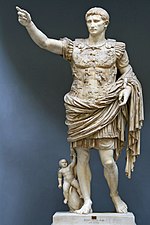Anima Mundi, Vatican City
Commons category link is locally definedEthnographic museums in EuropeMuseums established in 1925Vatican Museums

Anima Mundi (previously known as the Vatican Ethnological Museum) is a museum of ethnological art and artefacts in the Vatican City. It is part of the Vatican Museums.
Excerpt from the Wikipedia article Anima Mundi, Vatican City (License: CC BY-SA 3.0, Authors, Images).Anima Mundi, Vatican City
Rampa dell'Archeologia,
Geographical coordinates (GPS) Address Nearby Places Show on map
Geographical coordinates (GPS)
| Latitude | Longitude |
|---|---|
| N 41.906388888889 ° | E 12.454444444444 ° |
Address
Musei Vaticani
Rampa dell'Archeologia
00120 , Vatican City
Vatican City
Open on Google Maps










